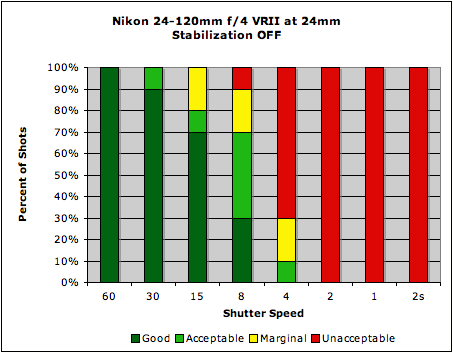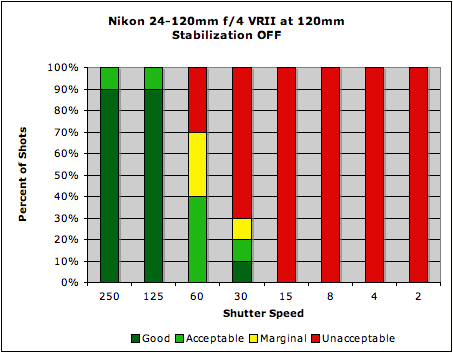Most people tend to think of image stabilization as being mainly for telephoto lenses. While it's true that their longer focal lengths tend to magnify the effects of camera shake, image stabilization can provde a very useful assist at wider angle focal lengths as well; anyone who's ever tried to blur the image of a waterfall, while keeping the surrounding landsape tack-sharp knows exactly what I'm talking about.
At the widest end of its range, the Nikon 24-120mm f/4G produced about 3.5 stops of image stabilization, including a reasonable number of sharp shots with IS on at 24mm all the way down to 1/2 second; this is fairly impressive performance.
 |
| Mouse over this chart to show results with IS activated. |
At 120mm, the lens again produces about 3.5 stops of image stabilization. However, even with extremely careful control for focus (so we're pretty certain it isn't a focus issue), the IS On results were just slightly soft at shutter speeds of 1/60 second or slower. Basically, the lens never gets as sharp as it would be at a faster shutter speed, but it hangs on with that pretty-good level of sharpness for somewhere between 3 and 4 stops. (It even managed to squeeze out two shots in the "Good" category a full 4 stops beyond what Rob managed with IS off.)
 |
| Mouse over this chart to show results with IS activated. |
IS systems tend to provide more benefit to less-stable shooters than very steady ones, so most users will see the same or greater amounts of shake reduction as we measured here. You can read more about our IS test methodology here: SLRgear IS Test Methodology, v2.

